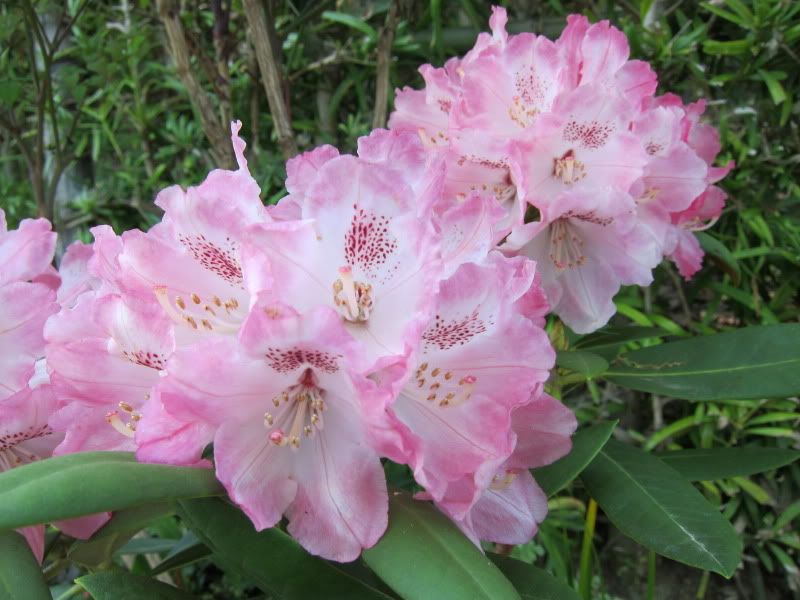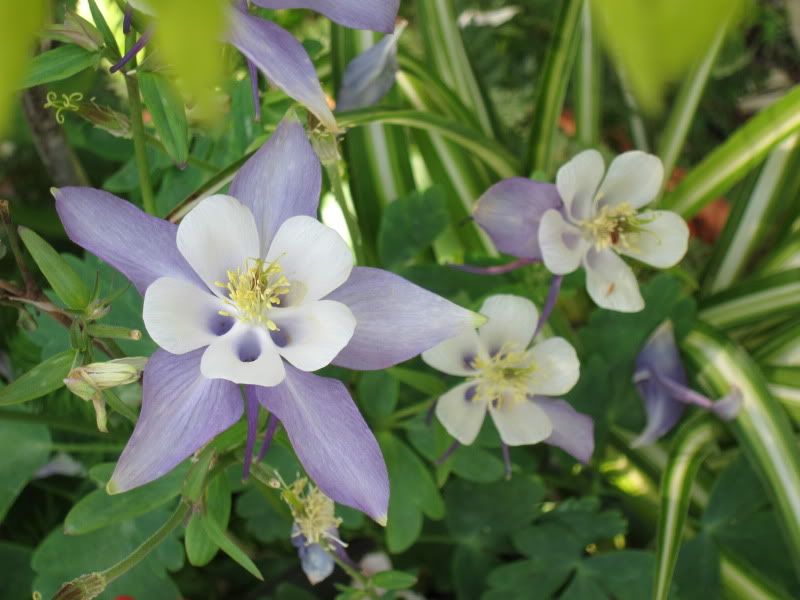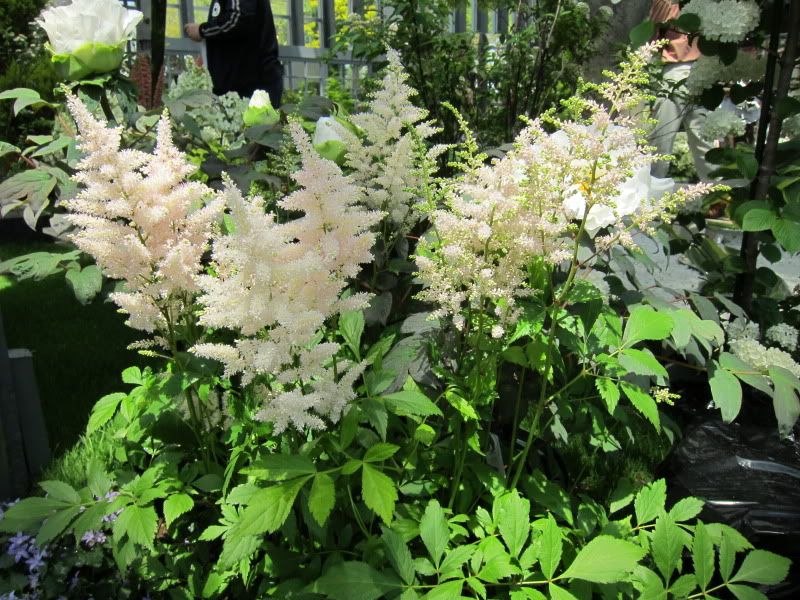Kinwashi Tour Japan Thread
-
http://www.nordicdenimhouse.com/blog/2010/09/momotaro-jeans-silver-label/
Today I thought of finishing the day by sharing details on another special denim design from our beloved Momotaro Jeans from Kojima, Okayama. You might have seen the below picture atMomotaro Jeans Facebook Page. The picture is from an exclusive denim design only available at Momotaro Jeans Denim House in Japan. I present to you, Momotaro Jeans Silver Label.
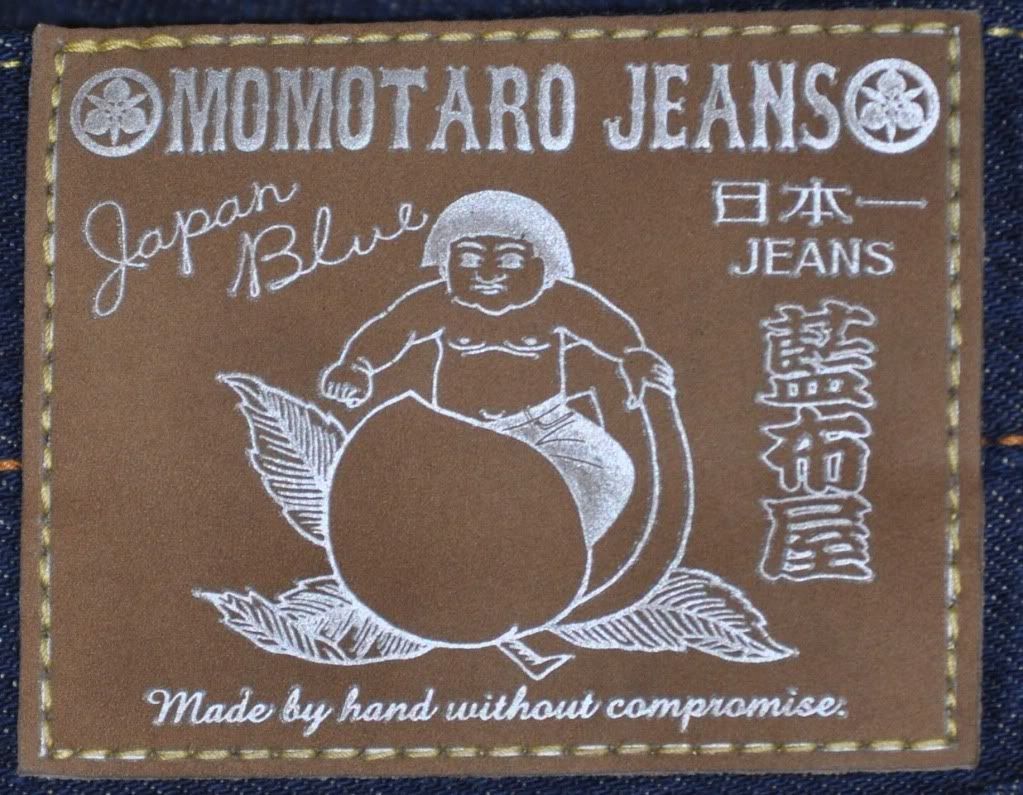
A limited number of these jeans have been produced as the design features the same exclusive details as the coveted Gold Label Momotaro Jeans.
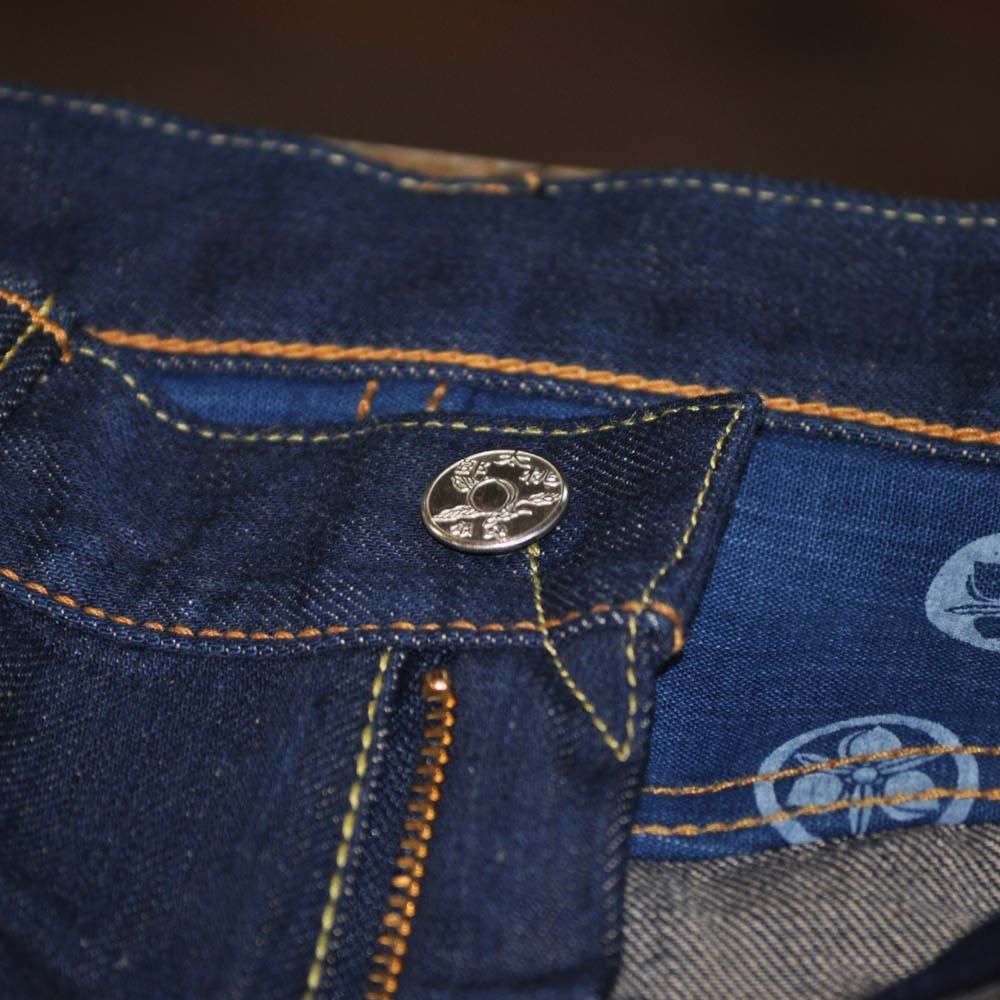
The denim is made using 100% organic cotton for natural, soft wearing experience. The yarn of the Silver Label Momotaro Jeans is dyed using natural indigo grown in Okayama, Japan. As with all of Momotaro Jeans denim, the hand dyed yarn is then woven into denim fabric using vintage shuttle looms. Just like with Gold Label, the jeans have hand dyed natural indigo finishing, but the denim is woven with machine loom instead of the hand loom. Giving the denim similar finishing as with G003-A. What separates the Silver Label from Gold Label is also the zipper fly instead of buttons. According to Momotaro Jeans, the denim is targeted to those 40 years and above whom in Japan prefer zipper fly instead of buttons.
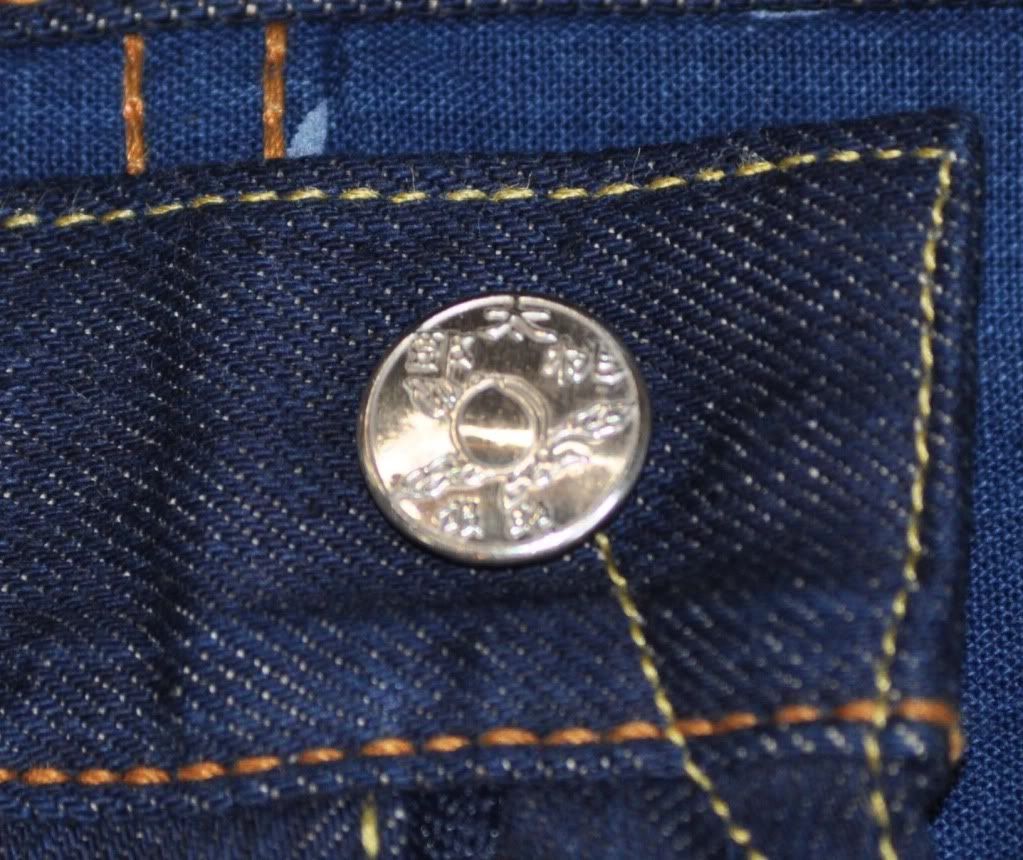
The button is made of silver just like the title indicates. The other hardware is copper. Similar to brands like Copper Label Momotaro Jeans. You can see other features similar to Copper Label such as the signature stitching on the right back pocket as well as the lining of the jeans. The hue of the Japan Blue dye is naturally different as the jeans are dyed using natural indigo that gives a traditional beautiful blue to the jeans.
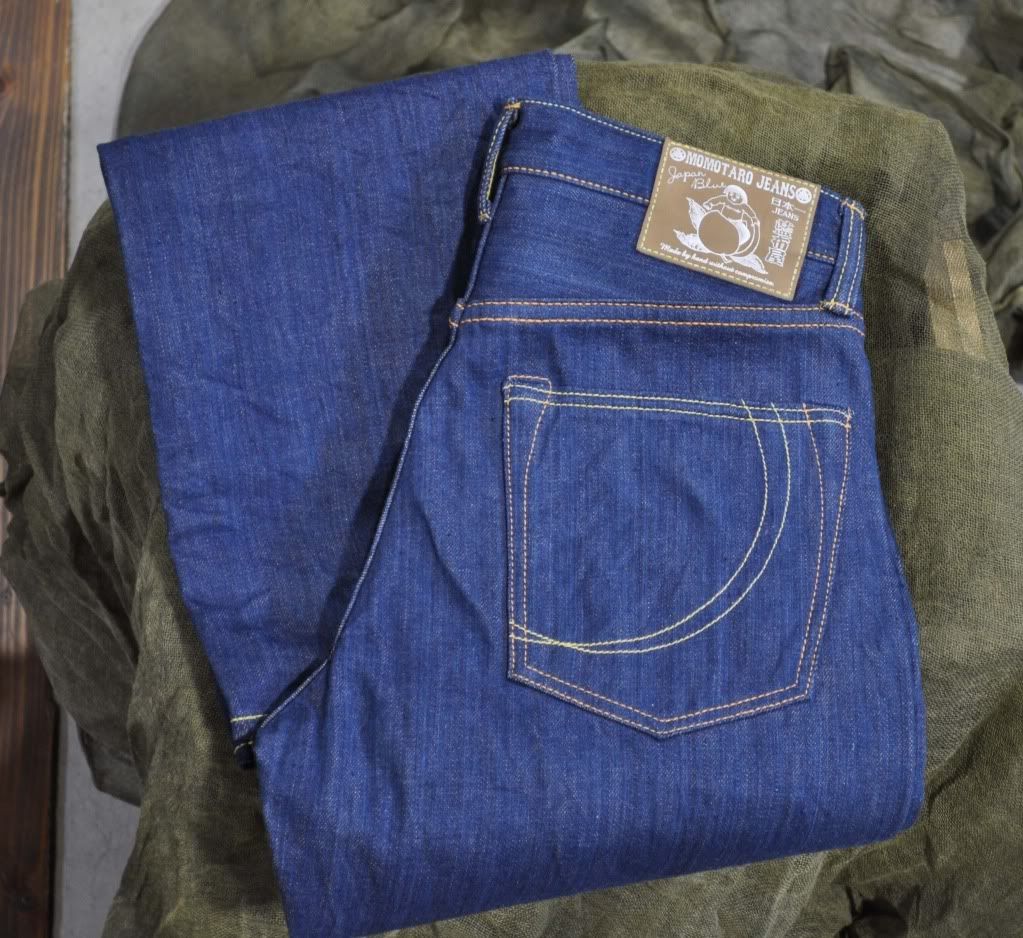
The item number for the Silver Label jeans is “S003-AZ”. The cut of the jeans is Classic Straight cut similar to G003-MB . The Label currently features only one cut.
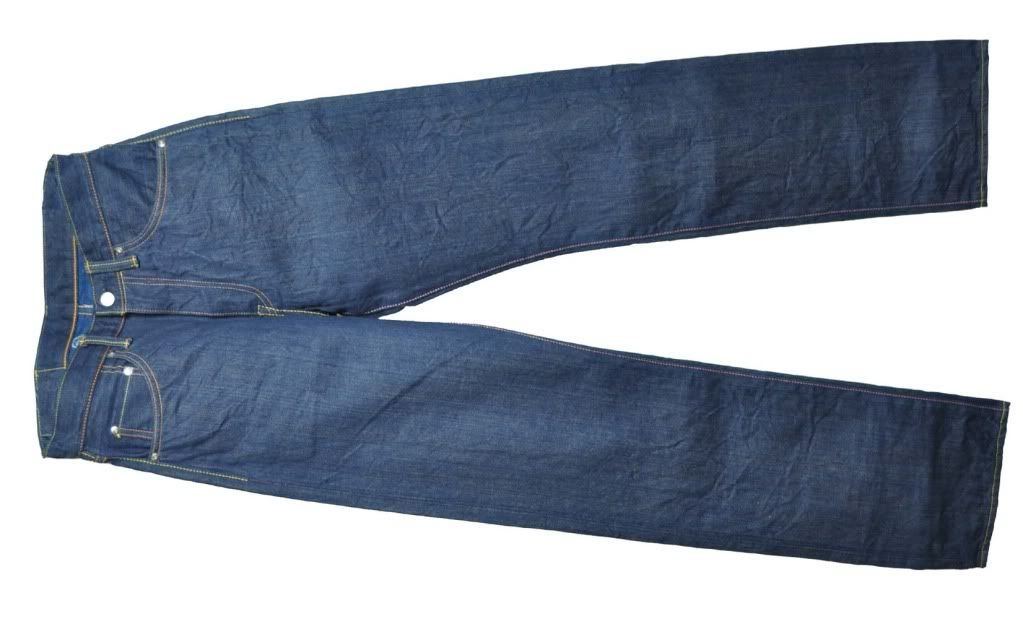
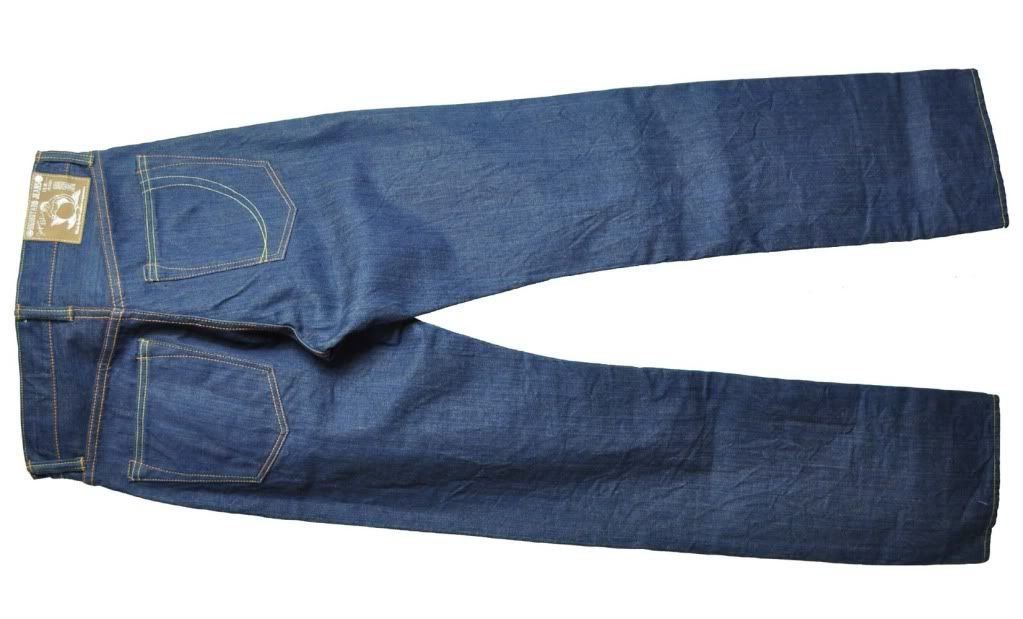
The jeans look great and I’m especially fond of the leather patch with silver details. The natural indigo dye and vintage finishing doesn’t hurt either. The jeans are priced similar to the lower costing Gold Label jeans, but as mentioned only available at Momotaro Jeans in Japan and in very limited numbers. We shall see if this product or a adaptation of this particular model becomes available outside Japan and Momotaro Jeans’ Denim House. I like the simple, but refined look of the jeans and having been in touch with the Gold Label jeans, have no doubt the quality will be outstanding as well. I really hope to get a chance to put a natural indigo dyed pair of jeans through wear and tear test to see how the denim adapts to the lifestyle and since the hand dyed yarn does not fade quite the same as pure indigo dye, the end results should be splendid. -
Yes...this another interesting destination.
not much local tour agencies... doing here.
Introduction of Okayama area division

- Okayama Prefecture used to be divided into three areas in the past.
- In the past, Okayama Prefecture used to be divided into three areas: Bizen, Bicchu, and Mimasaka. In Okayama Prefecture, we can enjoy Okayama-specific historical and cultural facilities, and the rich nature abundant in each of its primary areas. In the Bizen area, located in the southeast of Okayama Prefecture, you can visit the famous Okayama Korakuen Garden and Okayama Castle, the Inbe, which is a Bizen Pottery-making town, and the Bizen Osahune which is a “town of famous swords”. In the Bicchu area, which is located in the west, there are the Kurashiki Bikan area, Seto Ohashi Bridge, Kibiji District, and Bicchu Matsuyama Castle. In the Mimasaka area of northern Okayama, you can enjoy three famous hot springs; Yubara Hot Spring, Yunogou Hot Spring and Okutsu Hot Spring, Tsuyama
-
Momotaro is a symbol of Okayama. “The Ura Myth” is the root of an old tale, “Momotaro”, which has been passed on orally from generation to generation in the Kibiji District.


- The Kibiji District is an area with majestic ancient history and legendary stories.
- The myth of Kibitsuhiko-no-mikoto and Ura passed down through the years, is said to have been the root of an old tale called “Momotaro”. The myth is as follows. “The Prince Ura of Kudara (Baekje: A country that existed from the 4th to 7th centuries in what is the present day Korean Peninsula), used to live in Kinojo (castle of the devil) and caused trouble for the people living in the village. In order to defeat Ura, Kibitsuhiko-no-mikoto was delivered to Kinojo by the emperor’s government. After a blistering battle, Ura was defeated by Kibitsuhiko-no-mikoto. In the old tale “Momotaro”, Kibitsuhiko-no-mikoto is portrayed as Momotaro, and Ura is portrayed as the defeated devil.
- Kibitsuhiko Shrine which is still majestic now is said to have been occupied by Kibitsuhiko-no-mikoto when he battled Ura.
- There are buildings and ceremonies in Kibitsu Shrine which come to us from the legend; Okama-den (palace) is the place in which the neck of Ura is said to have been buried, and the holy Yatate Ceremony is for warding off evil spirits. There are many places connected with the old tale as well, such as Yagui-no-miya (the place where an arrow shot by Kibitsuhiko-no-mikoto and a rock thrown by Ura were said to have crashed and landed), Chisui-gawa (literary translated, “blood-sucking river”; after being shot out by Kibitsuhiko-no-mikoto, the blood from Ura’s one eye was said to have colored this river red), and Koikui Shrine (a carp-eating shrine where Ura, who tried to escape by transforming himself into carp, was said to have been held in the mouth of Kibitsuhiko-no-mikoto who had changed to a cormorant bird).
-
How to get there....easy.
from Haneda International Airport, than a domestic connection flight.
To Okayama.
http://www.okayama-airport.org/en/timetable/tokyo/
Direct from Singapore
No airlines flying direct from Singapore to Okayama
Other airlines flying to Okayama
ANA flights China Eastern flights Japan Airlines flights Korean Air flights -
So this is MAMAKARI from OKAYAMA.
nothing to do whith any curry or curry powder,
source
Mamakari Fish Dishes
***** Location: Japan
***** Season: Topic
***** Category: Humanity
*****************************
Explanation
mamakari, 飯借り (���り) Japanese sardinella,
officially called
sappa サッパ Sardinella zunasi
kiiwashi ã‚イワシ
Lives in the Setonaikai Sea of Japan along the estuaries of rivers, about 20 cm long. Often together with the fish konoshiro コノシム・���� (鮗) or tsunashi, another small herring.
Mamakari dishes are only prepared along the coastlines of the Inland sea, especially in Okayama. The fish itself is found along other coastal areas, where it has a lot of different names.
It is caught all year, but best SHUN from February to April. Most often eaten with some vinegar preparations. The intestines are taken out and it is kept in salt and vinegar before consumption. Sanbaizu vinegar is quite popular with this fish.
Grilled over charcoals is also a local way to eat it, especially directly on the beach, with the innards still inside.
At the Ariakekai Sea this grilling is called "ponpoko yaki" �ン�コや� because of the sound when grilling the fish and the innards start heating up. The fish itself is called "hadara" �ダラ, usually caught by chance when fishing for shrimp.
The whole fish, with a few cuts in both sides in the flesh, can be deepfried as karaage too, eaten with head, bones and all.
Nanbanzuke �蛮漬 is prepared frying the filets in oil before preserving them in vinegar.
mamakari, to borrow rice from your neighbours ...
The famous autor of the Meiji period, Narushima Ryuboku �島 柳北 (�る�� りゅ���)(1837 - 1884)) wrote in his diary from Okayama in 1869 :
"It looks like a small herring. When a fisherman catches it and brings it home to eat, it tasts very well. When he has finished all the rice at home, the wife goes to the neighbour to borrow some cooked rice and they continue eating. Hence the name."
Others say the fishermen used to grill the fish right on their boats and when the rice of one boat was eaten, they would drive to the next one and ask for his to share.
o-manma ��ん� "omamma" is a childrens way of calling cooked rice.
:::::::::::::::::::::::::::::::::::::::::::::::::::::::::::::::::::::::::::::::::::::::::::::::::::::
Some of my photos from Mamakari dishes
Click for enlargement!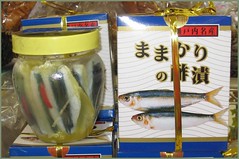

with yuzu citron
grilled as kabayaki like eel
with sanbaizu vinegar
with wasabi horseradish
with vinegar
dried with mirin
:::::::::::::::::::::::::::::::::::::::::::::::::::::::::::::::::::::::::::::::::::::::::::::::::::
mamakari zushi ���り�� sushi from sappa
Speciality of Okayama.
has many little bones and is not well liked in the Kanto area.
. . . CLICK here for Photos !
*****************************
Worldwide use
*****************************
Things found on the way
Tsunashi-zushi ���寿�
is made from salted tsunashi (konoshiro fish) in the central and southern parts of Okayama Prefecture. It comes as sugata-zushi in the form, nigiri-zushi on a handful of sushi rice and as maki-zushi with a nori seaweed wrapper.
. . . CLICK here for Photos ! -
One of the major highland resorts in western Japan, this place is famous for grazing of Jersey cattle.

Majestic Hiruzen Sanza and peaceful highland
The 1,000 meter high mountains, including Kamihiruzen, Nakahiruzen, and Shimohiruzen, and a basin spreading out in the southern foot, are collectively called Hiruzen Plateau.
Jersey cattle eat grass with sloping mountains in the background. Thanks to such an idyllic view, you can easily be reminded of things lost in an urban life. It is an area where visitors can enjoy nature and outdoor activities including camping, climbing and cycling in summer, and skiing in winter.
- Enjoy the highland!
Cycling

- Try horse riding
at Hiruzen Horse Park.

- Jersey cattle milk
“Whippy ice-cream”

- Hiruzen Jersey
“Yogurt”

- Cheese fondue
For more information, contact:
Hiruzen Tourist Associat
TEL : -
So this Hiruzen.
http://www.maniwarotary.com/for_english.html
>>Maniwa City Gazette â—�Where is Maniwa?  In Okayama at the source of the Asahigawa river, bordering Tottori Prefecture lies the Maniwa city.
In Okayama at the source of the Asahigawa river, bordering Tottori Prefecture lies the Maniwa city.
This beautiful city, some but surrounded by mountains lies at an elevation of 300 meters above sea level. It is famed for its nature and clean air, which has also brought notority to the agricultural products of the region.
The milk, from imported Jersey cows, is of particular fame in these parts of Japan, which is reflected in the steep prices one has to pay for this precious commodity. Well worth it though! It is absolutely delicious. So come enjoy nature, come enjoy MANIWA
Come partake in the exciting activities that Maniwa and the surrounding areas have to offer. Whatever the season, you will find your time quickly go by.
â—�The four season of Maniwa (Autumn and Winter) 
The exhilarating and wonderful ski slopes glisten in the snow covered peaks of the silver world that is the majical Hiruzen. At times warm and light, and at times harsh, each of the 4 seasons in Maniwa manages to express to us its very own special character. Maniwa is a testimony to warmth and strength of the glorious nature .
Maniwa has it all. From skiing in winter, to bicycling and walking in the rest of the year, Maniwa provides it all. Enjoy the nature of Maniwa, come drink the famous milk of our Jersey Cows.
Beautiful leaves in shades of auburn, red, orange, and yellow are displayed by the numerous trees. Nature is packing up for the winter, and the people of Maniwa are also getting ready for this time of hardship, which also hides a lot of pleasures. Maniwa is probably at its most beautiful at this time of year, an excellent time to visit.
â—�The four season of Maniwa (Spring and Summer) 
Jersey Cows munch on the grass of new green pasture field, and the Spring sings its freshness. The whole of Maniwa comes back alive again. This is one of the most busy times of the year, with planting and preperations for a new season. There is a different, more energetic step to the people living here, as they greet the warmth and brightness of the sun. A glorious time for man and beast alike.
Morning on the Hiruzen Plateau starts early. The singing of little birds and the sound of mountain gorges provides nature’s alarm call. And wether morning or evening, the kind and soothing smile of Hiruzen’s three peaks create a wonderfully fantastical and peaceful atmosphere. As the morning sun slowly turns its force towards us, the chirping of birds becomes all the louder: the breaking of morning, and time to take to our wings. “where shall we raise our children...? We have returned to Yatsuka Village, the place where our parents were born, amidst nature and human kindness. We have discovered the place of harmonious partnership.”
Chosen as one of the top 100 nationwide, the mineral water spring bubbles up from the Salt Pan spring, and cools the humid summers of the Hiruzen Heights. A time to relax, a time to enjoy the beauty of this place so comfortably nested between the mountains of Hiruzen. A variety of outdoor pleasures can be enjoyed in these beautiful and tranquil surroundings, and ones imagination is the only limit.
â—�What to do in Maniwa and surrounding area 
*Hiking/Driving
The nature is awsome, and can be taken advantage off in many ways. Climb the three peaks of Hiruzen and see the whole valley appear beneath your feet. There are numerous hiking trails, from beginner levels to the more advanced. It is up to you.
The majestic Hiruzen Heights are located in the Daisen Oki National Park and make up the most expansive sightseeing resort in Okayama Prefecture. Jersey cows graze in their quiet pastures adding a pastoral touch to the surrounding scenery. A restaurant is available, but you can also enjoy barbecues. Horse riding is also available. It is also famous for the Shiogama cold mineral spring, selected as one of the 100 best waters in Japan.

*Jersey Cows and jersey milk
Jersey milk is made from the best Jersey cows in the world. It is said that the Jersey milk from Hiruzen is richer in nutrients than any other milk in Japan.
Jersey cows are originally from the small Anglo-French island in the English Channel called Jersey. It is said that once, when England could boast of an empire that never saw the sun set, the King of the time decided that the standard of the milk from his Jersey cows must also be the best, so that he could be said to rule over the best cattle too. Hiruzen Jersey Land In the large expanse of land at the foot of Hiruzen, many Jersey cows can be seen enjoying the rich green pastues of this agriculturally abundant area.
It is from these Jeresy cows, whose delicious milk is being used to produce the special flavor of Hiruzen dairy products. The kind of dairy products produced here are not just milk for drinking, but also a white mould cheese, like the kind made in French Normandy, and a low heat pasturized yogurt, amongst other products. At Jersey Land, one can enjoy not only purchasing various Jersey milk products, but one can also try the mouth wateringly delicious Jersey beef, B.B.Q. cooked on 10 meter long grills. A fantastic place for steak lovers, and a wonderful place to catch ones breath. Jersey Milk -
-
Oath of the three wine Hiruzen
me peace of mind and security is a priority.
· I stick to season.
· I will protect the natural environment.
Fall in love with mountain winery grapes
utilizing the cool climate and relaxed earth, Hiruzen plateau mountain cultivation of grapes has been carried out for a long time. Wild grape is known as brewing itself and cultivation difficult, more than a quarter of a century, "Hiruzen winery" has ever diligent in making wine. Blessing of the grapes ripe mountain farmers under the contract, to Tawawa have me bring happy moments.
Yuji Wakayama blind tasting of wine advisors certified Sommelier Association
(· dry red Yamabudo 720ml )
is made ​​from 100% mountain grapes, mellow taste spectacular in this wild and
very rare in the world, such as wake up surprise there.
There is a deep purple hue is unparalleled enough.
The wine of nature itself of Hiruzen, health itself.
But not only unusual, you will feel unique and natural loveliness.
(· Dry red Hiruzen 360 ml - 720ml )
A blend of the grape berry mountain, have been finished to mild.
Familiar to those who drink red wine usual, will be changed interesting short-term.
In an intimate flavor while the taste and feel the deep wild mountain grape,
also easy to match, such as roast.
(Slightly sweet rosé Hiruzen- 360 ml - 720ml )
, etc. There is also a theory that "no sake in rosé wine."
But unlike Rose of grapes this mountain.
Not feel the half of it is the middle of the red and white, this unique rosé
has a stage of.
White as a refreshing, tastefully as red, rosy hue was dull.
As it happens, it's not too sweet persistent, I tend to adapt to a variety of foods.
Japanese food is also easy to match with. (Very sweet, frozen juice Pione 360 ml )
-
Yes, this Hiruzen the wine factory we visited.
THis is the bottle, I got there.
-
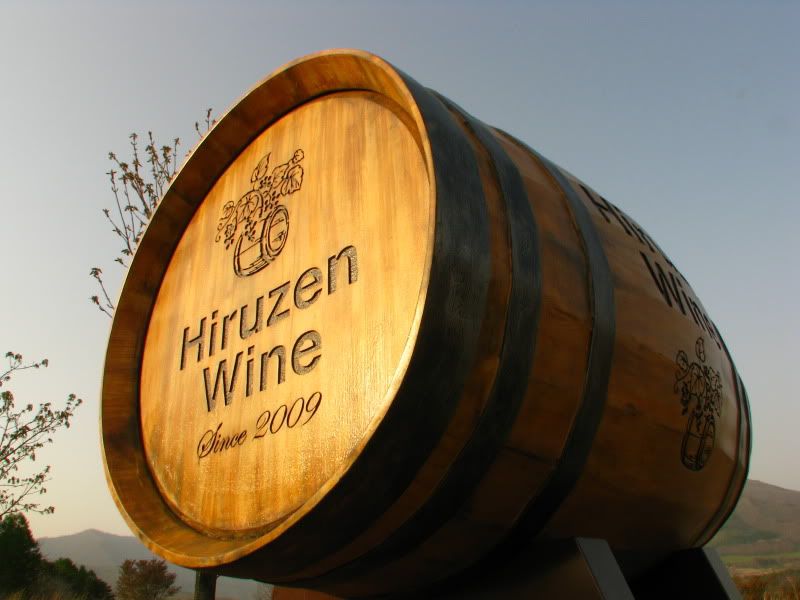
-

-

Mr. Awano Patissiere great child-
one of the leading Japanese Patissiere. College Tsuji learn confectionery, confectionery in the French National School, working in the company of well-established store and confectionery material, such as day and French Henri Charpentier. He is currently working as a confectionery expert pastry chef instructor to teach colleges and universities, professional.
Mr. Tomomi Eguchi "best home" NHK
best home live NHK! This is a blog of Mr. Tomomi Eguchi was please to report coming to interview "Taste of pride (4) omnibus".
Hiruzen Jersey Land
is a facility that can be tasted the taste of Jersey cattle heartily. You can also visit the manufacturing process of cheese and yogurt. Riding in the adjacent park, you can feel free riding experience even for beginners.
Hiruzen tridentate
tridentate Hiruzen made ​​Kamihiruzen, Nakahiruzen, from Shimohiruzen has been designated a National Park "Oki Oyama", as it is beautiful appearance of nature.Spend a holiday in beautiful landscape with grazing cattle grazing Jersey.
Nature park pasture
from spring to autumn, Jersey cattle are grazing, you can interact with Jersey cattle everywhere in the park. In addition, the facilities and play equipment for children, edible wild plants are nearby park, family fun.
Museum "Rinku" Iwato of heaven
boulder in the shape of the door in the middle of the Iwakurayama is called "Iwato of heaven" from a long time ago. Festival takes place or, in theaters Rinku has become the resting place of worship. The view from here is magnificent, Hiruzen plateau overlooking the below also. Festival "luck Iwato of heaven" to be held in April every year.
Her herb garden building Hiruzen
fragrance of colorful flowers and herbs in soothing and things to do. Main attraction is the lavender bloom from July to begin. In "House of smell", original dishes using fresh ingredients and herbs of Hiruzen, mountain vegetables.
"House of the Wind" Road Station
down the road Hiruzen IC Yonago, is just now. Hiruzen boast specialties that take advantage of dairy products and vegetables, local natural materials, and studded. Recommended is the market production of fresh vegetables, local growers to ship.
Center for Joyful Park Hiruzen plateau
rich natural Miki is located in the center of the original. Park is a variety of events will be held, there are many attractions. Adults can enjoy as well as children. I have extensive dining facilities are also souvenir.
Hiruzen plateau campsite
in a large campground, some camping sites, permanent sites, the site is brought, in the wilderness of Hiruzen, you can enjoy the outdoor life in any compartment.There is also a ranch adjacent to the camping site, beyond which is a very good view of the mountains spread Hiruzen.
Hiruzen plateau Sports Park
baseball stadium facilities, mini golf, and tennis courts. It is also good to take that fatigue after sports sweat because it also features a spa facility.
Shiogama camping
tent that is the square of lawn and spacious, there is a size of about 300 tents Zhang minutes. "Reisen of Shiogama" famous water springs have been close to the site, I have direct sales of fresh vegetables that came off locally at the same site.
Bear Valley Ski field Hiruzen
Hiruzen I. motorway Yonago It is a convenient 5-minute access to the slopes from C. Night skiing is also provided equipment sales every day, it is a ski resort that can be enjoyed in the After Five urban.
Camping black Kogen Onsen Tsu
is a campsite at the foot Tsugurosen spread. You can enjoy free camping and camp site. In size and spacious, camping sites are also substantial equipment such as water and table each site.
Jin Sato Fureai black creature
it is a natural park rich flora and fauna that inhabit the plateau can be observed Tsu black. Tsukamidori enjoy fish, fishing streams, and barbecue in the park Tsu Sabo Kurokawa. In addition, it is also held events such as nature observation events.
Hiruzen folk museum
are exhibited in panels and other artifacts from the burial mounds and moundsッfour, the natural and local entertainment Hiruzen. The museum is located adjacent to the tumulus mound, Heviz.
House of lacquerware Gohara
It features the Museum of History and Folklore Kawakami. Gloss lacquer increases the moisture as you use it, "lacquerware Gohara" with a tradition of 600 years, you can feel the warmth. Tours are available if you book in advance the work of landscape Gohara lacquerware.
Yu "plateau" natural hot spring (in the highland village of vacation Hiruzen)
Hiruzen holiday village on the plateau. From large bathroom on the third floor, East Wing outlook overlooking the plateau, it overlooks the tridentate Hiruzen much. You can also enjoy outdoor sports around.
"Kan Yu Comfort" hot guy or Hiruzen
露天風呂the beginning there is a large public bath and spacious, surrounded by nature. To the public bath, hot water, etc. There is also a Jacuzzi bath, let hit. It is a good thing to take the fatigue after exercise in the park that features sports Hiruzen. -
This Jersey highland milk bottle.
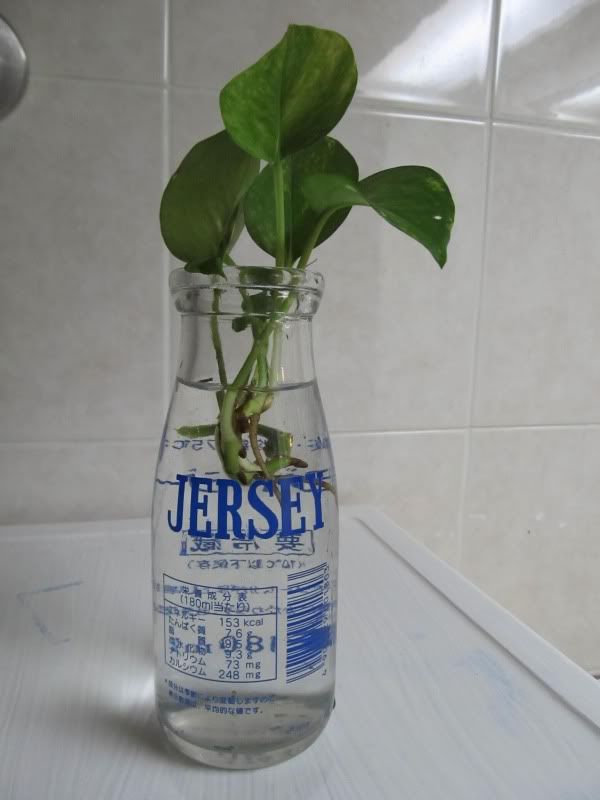
-
So this picture all are from Okayama trip.
-
-
-
-
After seeing over in Japan, will you still go down to the reclaimed land as said the World class garden over here.
-
What Spring Flowers our local Gardens got?.... What CNY Flower Fare coming? whll show you more...each and every on my collections on photo Spring Flowers from Japan.
Edited by kinwashi 31 Jan `11, 8:27PM -
Edited by kinwashi 31 Jan `11, 8:45PM
-
What is new this Spring in Japan.
already decide to go for this event the middle of this year.
Edited by kinwashi 31 Jan `11, 8:55PM
-
-
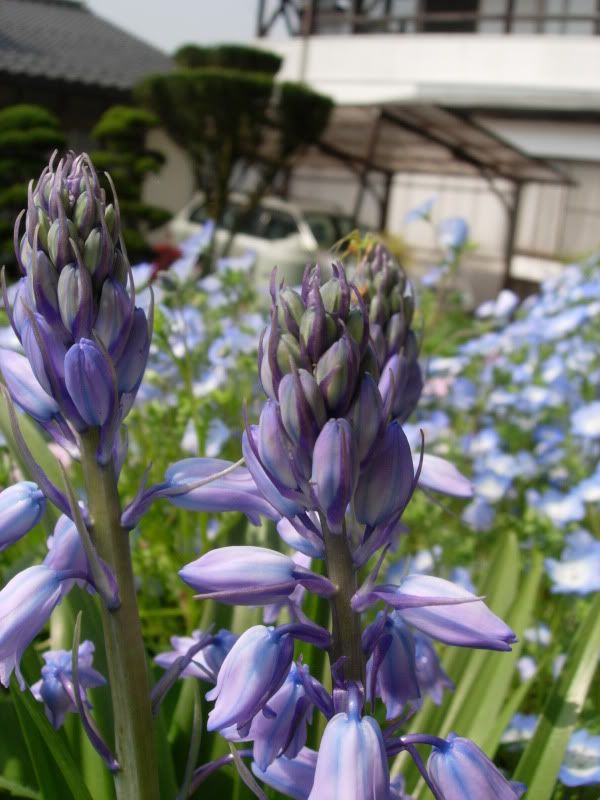
-

-
Iya Valley Area祖谷エリア
Tokushima徳島県
Vine-made suspension bridge over the Iya-gawa River. A 200-meter-high cliff created by the river.
Situated in the western part of Tokushima and nearly in the center of Shikoku, the Iya area is one of the three large "hidden mountain regions" in Japan, forming a part of Mt. Tsurugi Quasi-National Park. Deep in the bosom of Mt. Tsurugi-san, the second tallest mountain in Shikoku, the region is surrounded by mountains in the Shikoku Mountain district, with a deep valley formed among the mountains cut through by the limpid Iya-gawa River, a tributary of the Yoshino-gawa River.
Nana-Magari (seven curves) is known as the most dangerous spot in the valley. On a rock overhanging there stands a lovely Manikin Piss, because of the tale that says travelers used to urinate from the spot to show their bravery. The height of the rock, 200 meters above sea level, makes you cringe just glancing down below.
The vine bridge over the Iya-gawa River, called "Iya-no-Kazura-bashi," is a 45-meter-long and 2-meter-wide suspension bridge with a height of 14 meters from the water level. Designated a national important folkloric property as one of Japan's three rare bridges, the bridge is rebuilt every three years. If you go deeper upstream into the recesses of Iya, you will find a double vine bridge made up of female and male bridges, called "Oku-iya Niju Kazura-bashi."
Directions
From Tokyo :
[Air] 1h 15 min from Haneda to Tokushima Airport, and 30 min by bus from the airport to Tokushima Station. 1h 10 min from Tokushima to Awa Ikeda Station by JR Tokushima Line (limited express), and 50 min by bus from the station to Iya-Onsen-mae or 1h 10 min to Kazura-bashi.






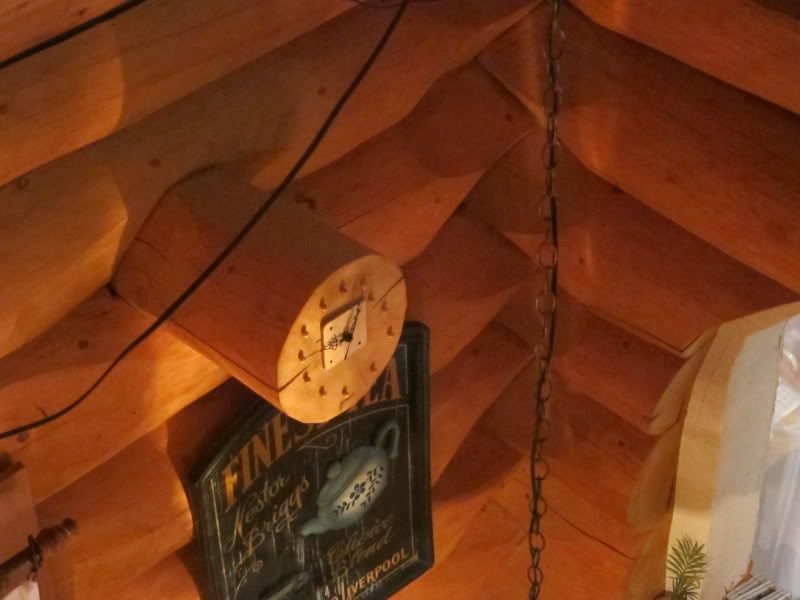
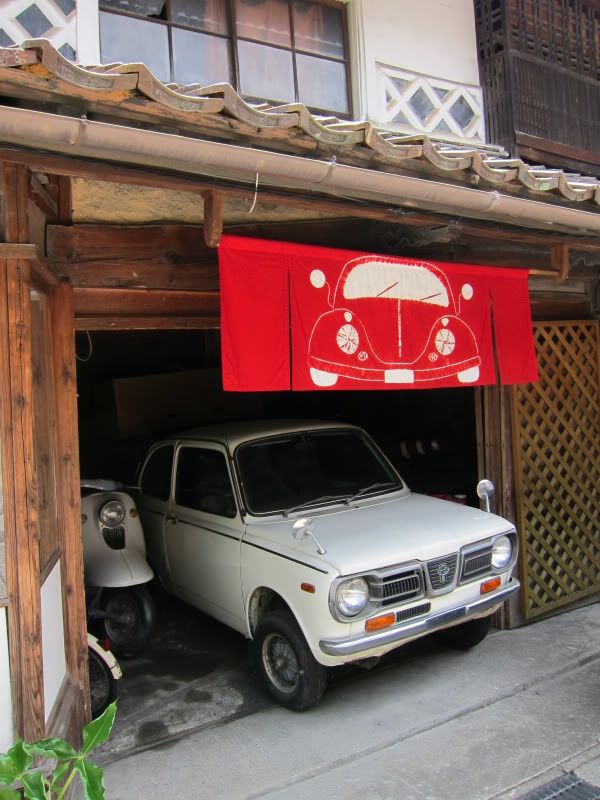
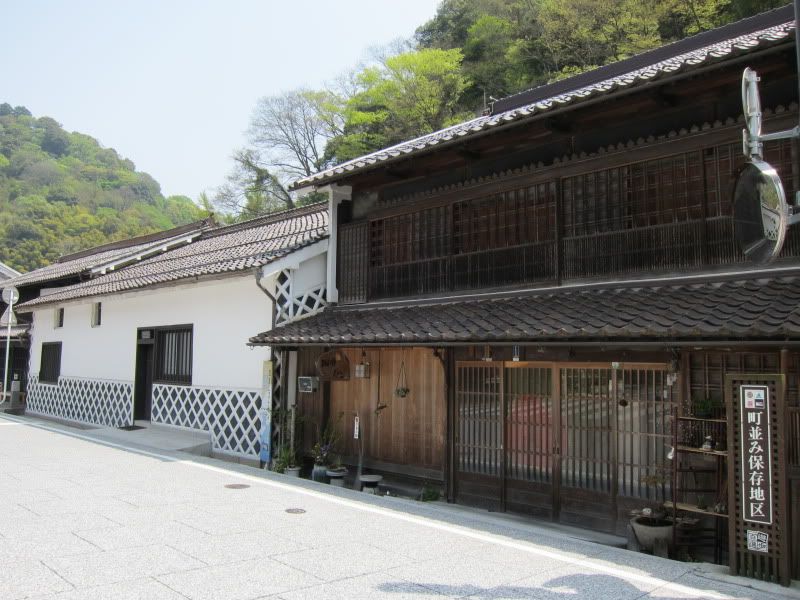

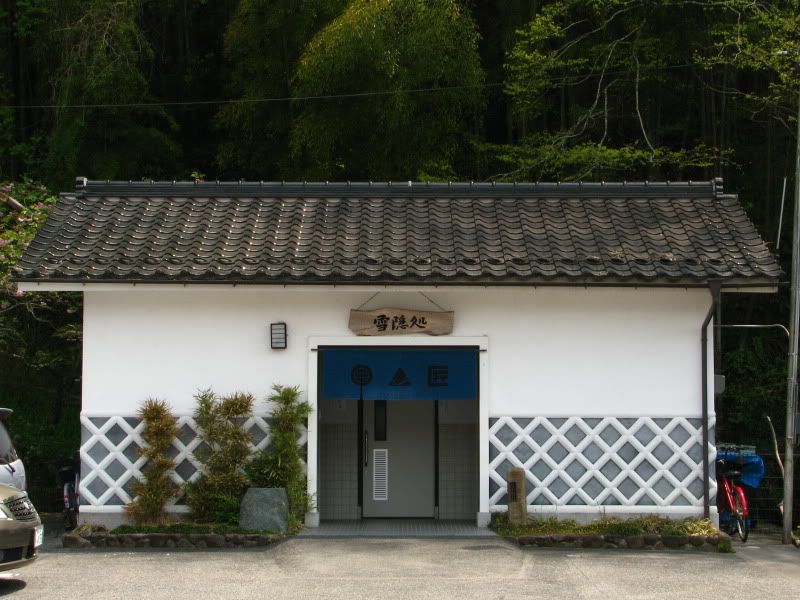
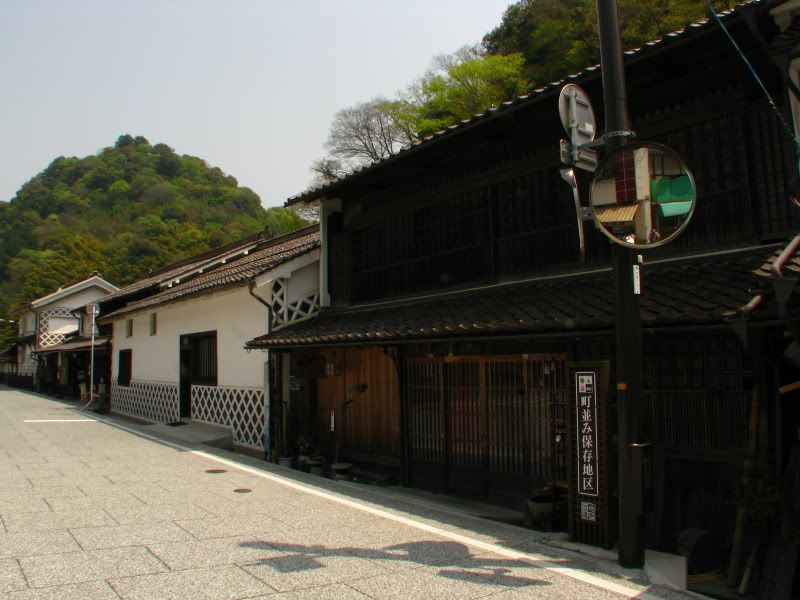
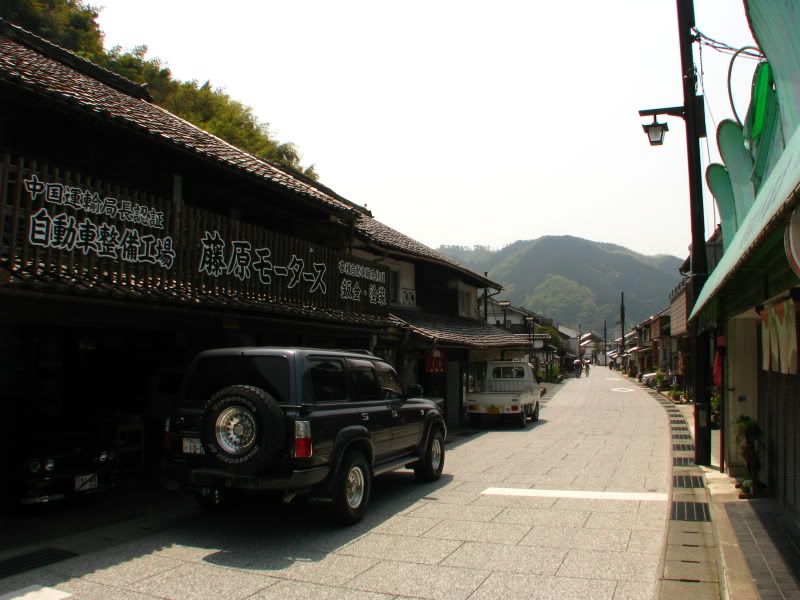
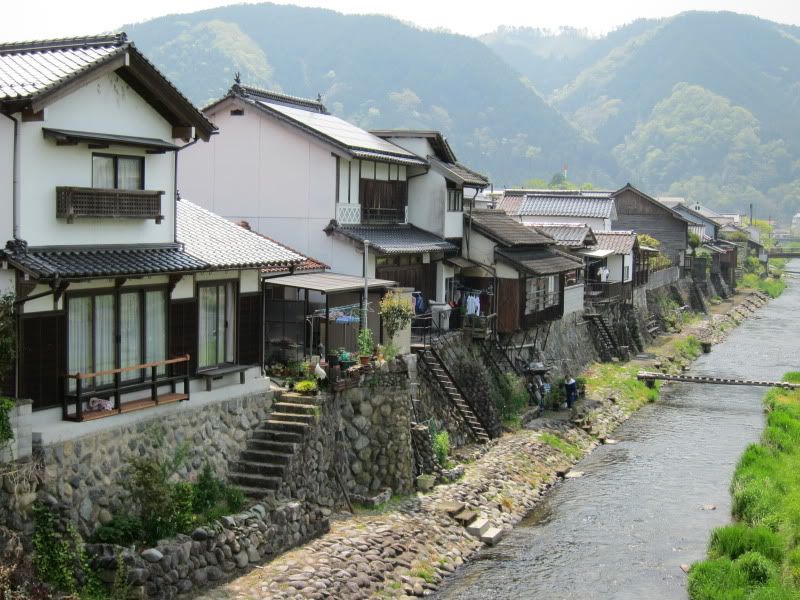

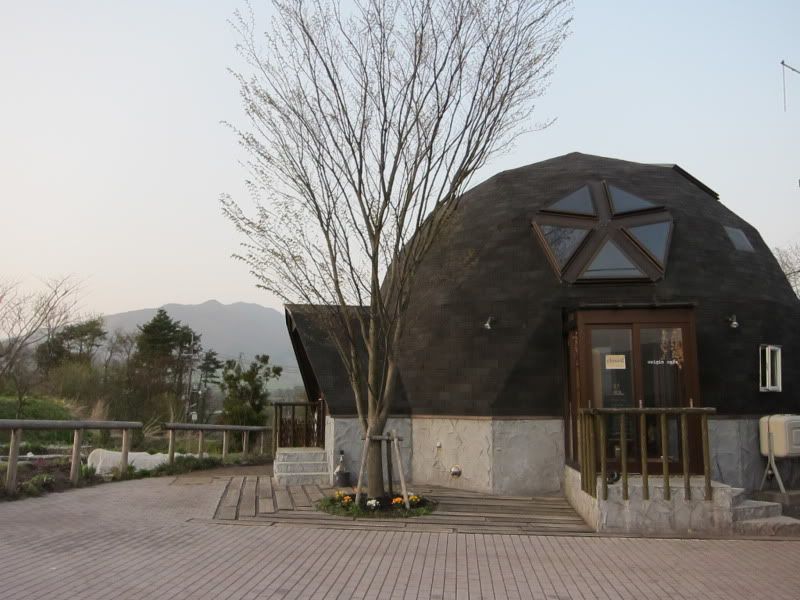
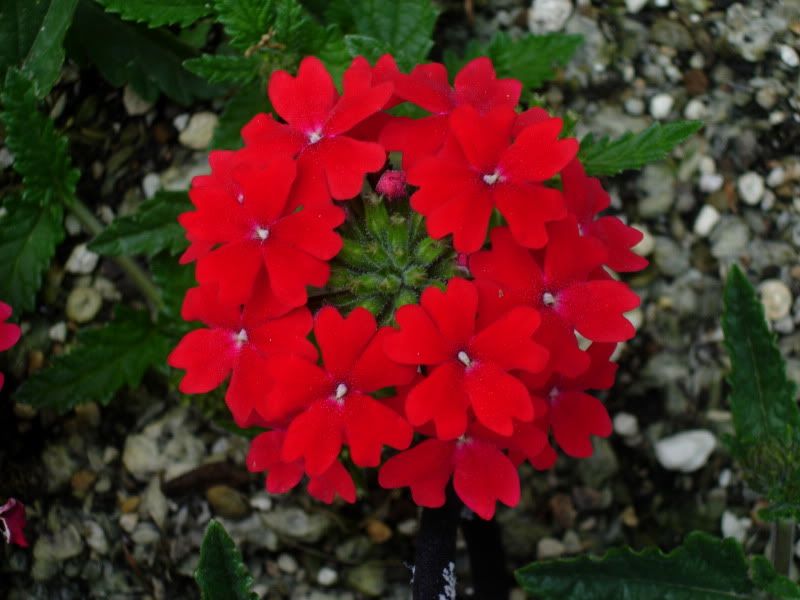
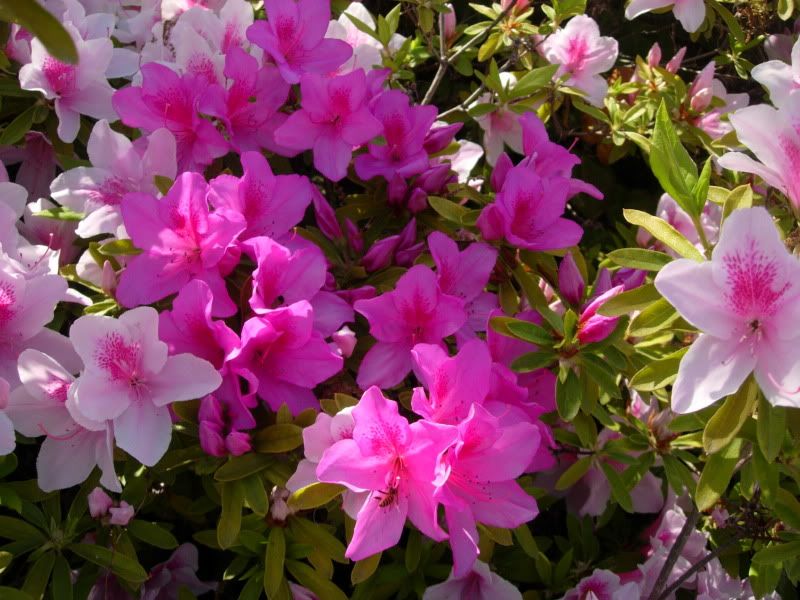
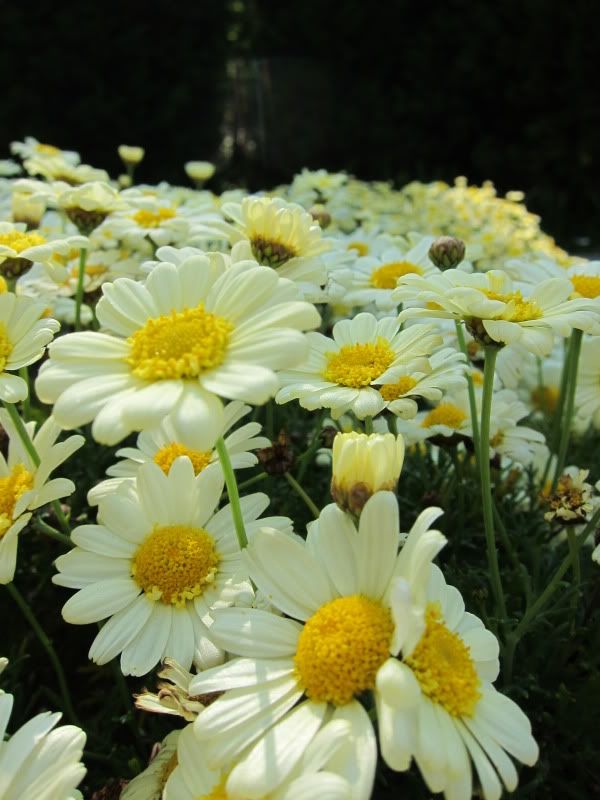

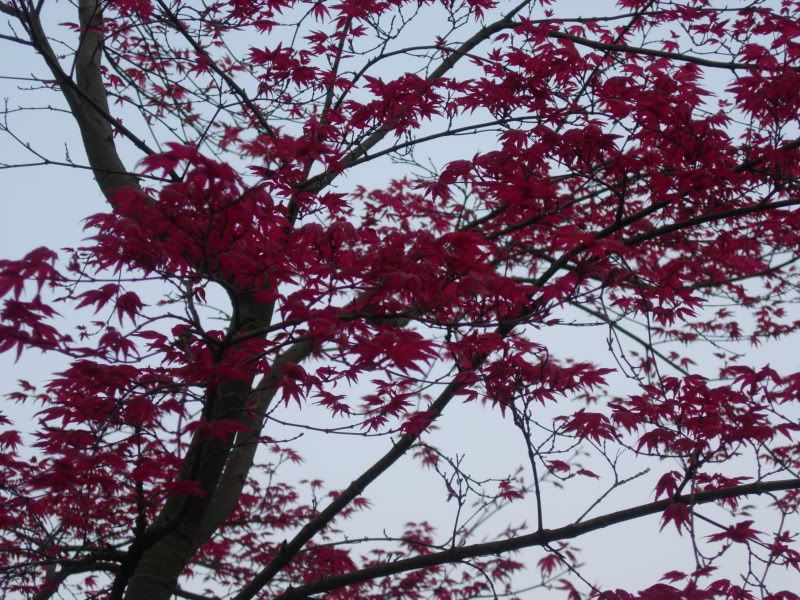

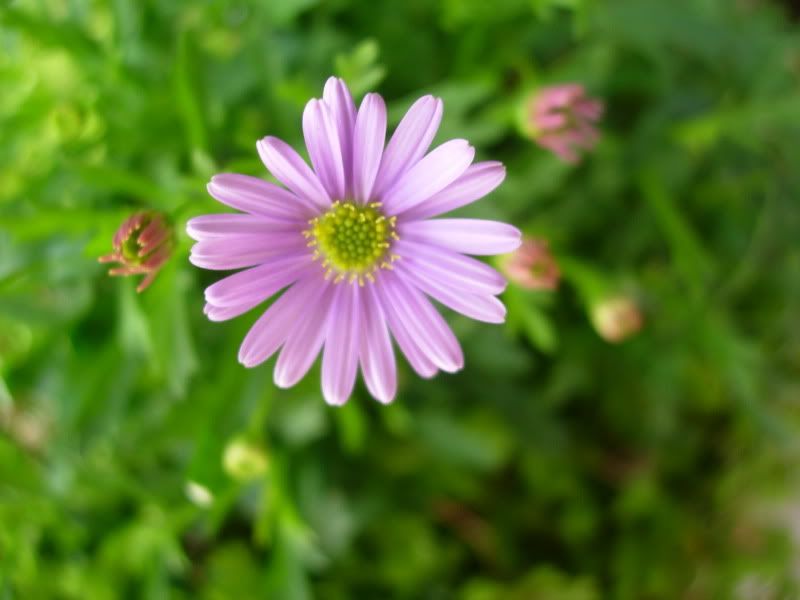
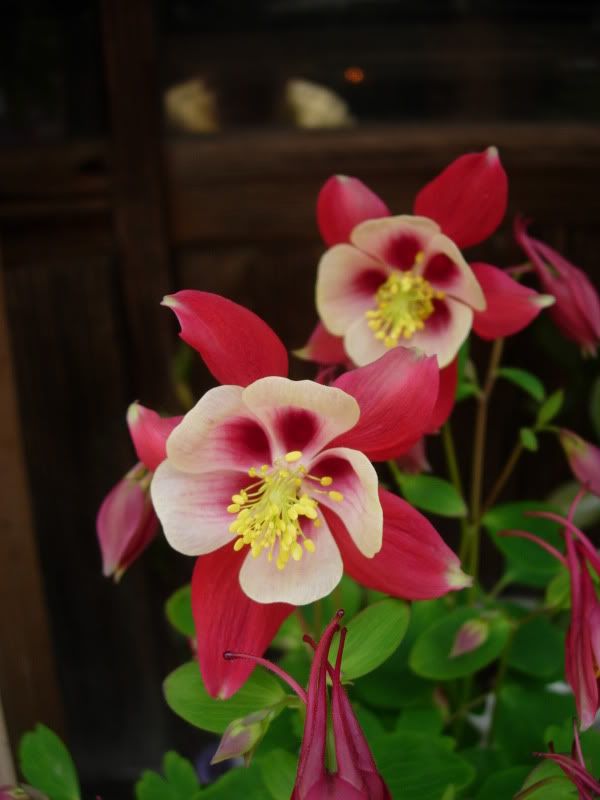
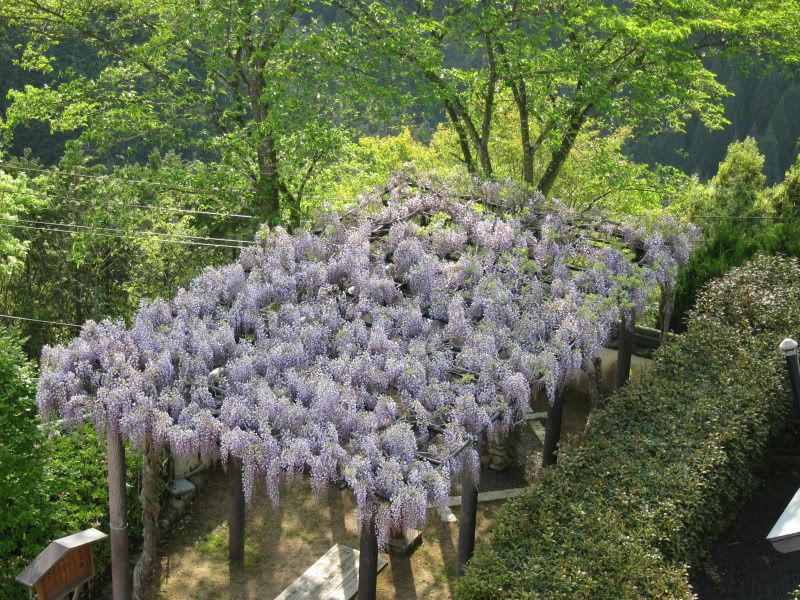

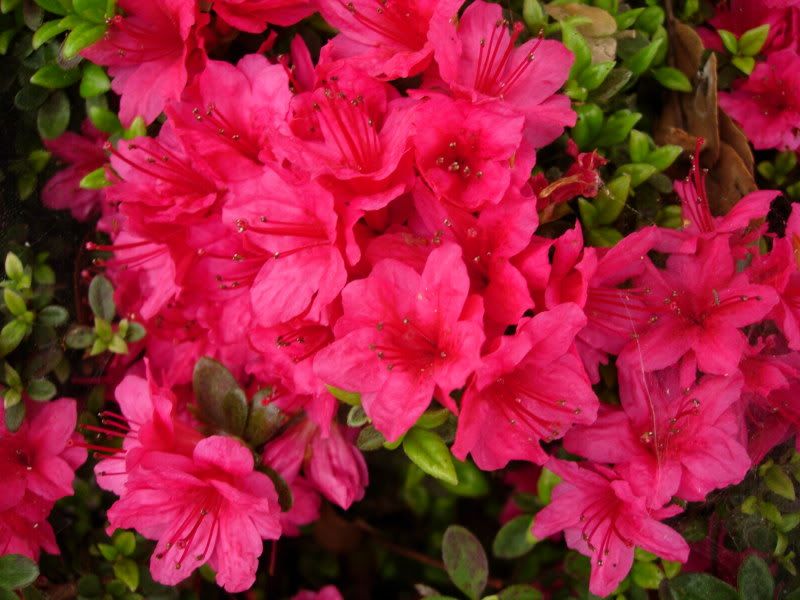


 Oku-iya Niju Kazura-bashi
Oku-iya Niju Kazura-bashi Oboke and KobokeOboke and Koboke are the valleys located upstream ...
Oboke and KobokeOboke and Koboke are the valleys located upstream ... Miyoshi-City Tourist Informati ...
Miyoshi-City Tourist Informati ...


